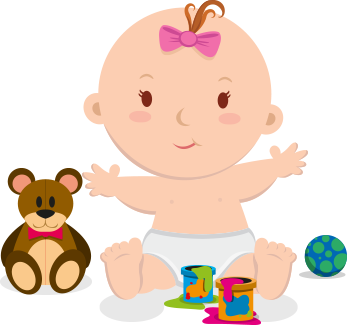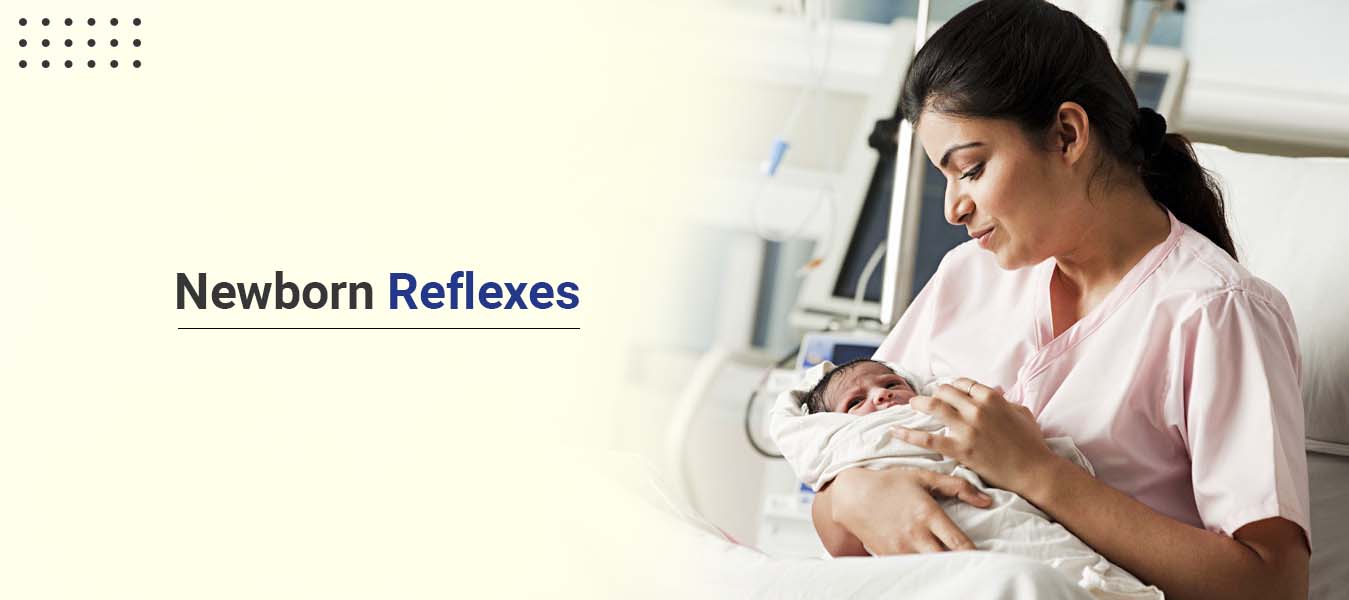Newborn Reflexes
Reflexes are involuntary movements or actions. Some reflexes are spontaneous as they occur on their own while some are a response to certain triggers. Also, reflexes are a way to determine the normal working of a baby's brain and nervous system. Lack of certain reflexes can be a sign of some problem with the brain or nervous system. In that case, it is important to consult the best child specialist in Agra. Certain reflexes are unique to babies and are seen in different stages of development of babies.
Some of the reflexes seen in newborn babies are as follows:
Rooting Reflex:
When the corner of the mouth of babies is touched or stroked, they move their heads in the direction of the touching. They move their head in the direction with their mouth open and rooting in the direction. This helps them find the direction of bottle or breast to feed. This reflex lasts for around four months.
Sucking Reflex:
Rooting helps the baby get ready to suck which allows the baby to breastfeed safely. When the nipple touches the roof of the baby's mouth, the begins to suck. This helps them coordinate the rhythm of breathing, swallowing, and sucking. The sucking reflex is developed during the pregnancy. It starts developing on the 32nd week of pregnancy and fully develops on the 36th week of pregnancy.
Moro Reflex:
This reflex occurs when the baby is startled and is also called a startle reflex. They can easily get startled by a loud sound, sudden movement, or even their own cry. As a response the baby throws back their head, extends out their limb cry and quickly pulls back their limbs. This reflex lasts for two months.
Moro Reflex:
TThis reflex occurs when the baby is startled and is also called a startle reflex. They can easily get startled by a loud sound, sudden movement, or even their own cry. As a response the baby throws back their head, extends out their limb cry and quickly pulls back their limbs. This reflex lasts for two months.
Tonic Neck Reflex:
Tonic neck reflex is sometimes called fencing position. When the baby's head is turned to a side, the arm on that side stretches out and the opposite arm bends on the elbow. This reflex generally lasts for 5-7 months.
Grasp Reflex:
You must have noticed that the baby grasp your finger when you put it between their hands. This reflex lasts for 5-6 months. A similar reflex in toes lasts for about 9-12 months.
Stepping Reflex:
When you put the baby on their feet upright on solid ground, they tend to walk or dance. This reflex is also called the dancing reflex. This reflex lasts about 2 months.
It is important to observe the reflexes of the baby. It is important that the reflex work symmetrically on the both, left and right sides of the baby's body. If you observe asymmetry in the reflexes, it might be an indication of some problem with the central nervous system. In that condition, it is important to consult the best child development center in Agra to seek proper assistance and treatment.



